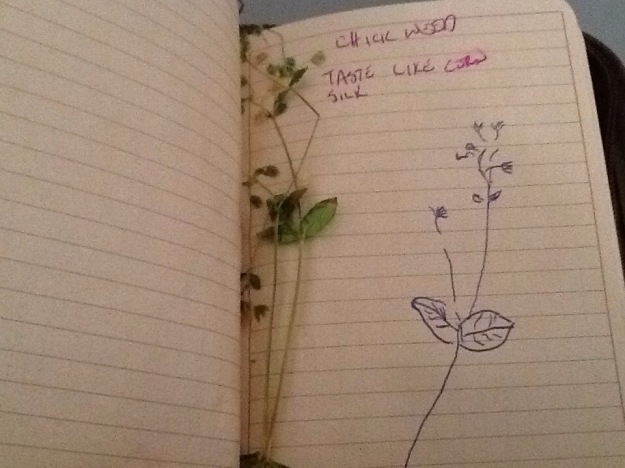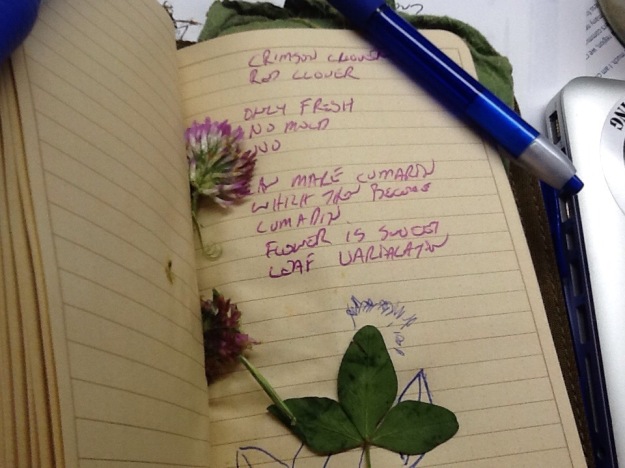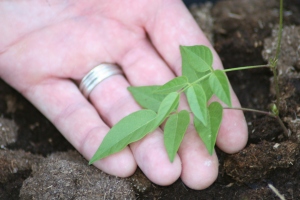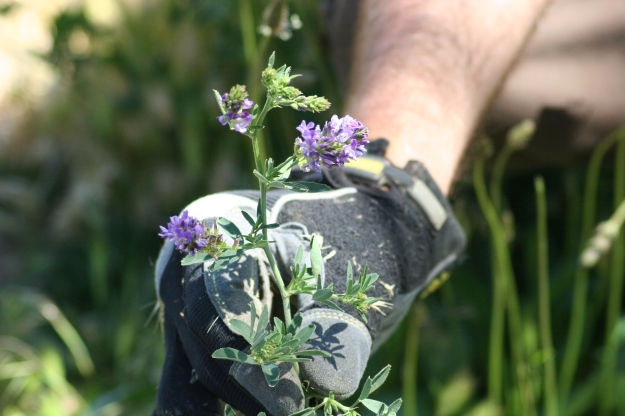First of all— this is for an assignment of a workshop I am doing– I am a new learner in this. If you want to know about wild edible and medicinals- seek out a workshop and mentor who has a solid record and verifiable knowledge. Doing this wrong CAN KILL YOU.
Second, these any my field notes of the day. I know I still have tons of work to do in this area including more research and practice identifying each plant. My goal is to learn this for me and not to teach. Again- seek out an established mentor for identifying plants.
I met up with my buddy Josh who eats wild as part of his families diet. This is part of a skills swap. Josh is highly knowledgable in this area and I trust him and his knowledge. We covered both edible and medicinal plants. I am going to do this in the order of instruction as we walked through his place. Josh was good about showing the use, talking about variants, and then quizzing me on knowledge and identification. With the exception of two plants that are rare on his place, I cam back with samples of everything.
Shepherd’s Purse
Identified by small hearts or the purse—Can be used for clotting
Knot Weed
Listing as medicinal since it can be used to secure bandaging such as Mullen to a wound. Small spear like leaves and the stem was super tough.
Latuka

Dandelion on the left and Latukaon the right. Latuka resides on all 7 continents and is edible. A very strong spinach like leaf.
Latuka is like a spinach, only has a more bitter taste. This one I mix up with Dandelion when looking at just the leaf.
Dandelion
I have to admit that I knew about this, but had never tried it. Golden flowers on top. The flower was pretty good, the leaves were okay, but the stems were extremely bitter. Adding salad dressing to my survival pack is a must.
Bedstraw/Goose Grass
Can be used as a coffee substitute, but has a lemon type taste. We didn’t make any today but it is in the plan since it is a late season herb. The tips are edible but really it should be seeped. The stem is almost square and the top has 8 whorls. By touch it “hooks” or clings to you.
Red Clover
This was one of my favorites. purple, crimson or even red flowers with small variegated oval leaves. Josh pointed out to only eat fresh with no black spots or mold, it is very dangerous and possibly deadly if not eaten fresh. The flower was really sweet and I ate several.
Goose Foot/ Fat Hen
Can be used as an alphalpha substitute with chickens to fatten them up. Its a type of wild spinach. Two types exist- maple leaf and non- maple leaf. small leaf with “goose” imprint on the leaf veins. Can be cooked or eaten raw.
Common Mallow
Had I know I had “Mallow Heaven” in my yard I wouldn’t have spent the past five years to kill it, spending around $50 a month to do so. I liked Mallow that sat in the shade and had smaller leaves. Mallow grows in clusters and the leaves are packed with vitamins A and C. Has a mild flavor. I have a few spots in the yard where Mallow now grows— until I eat it

I spent close to $1200 the last five years to kill this stuff- only to find I was given a gift plant to eat!
Columbine
Another favorite- a really sweet taste to it. I have these on my place and sucking the stems of the bottom of the flower was a great treat. The nectar was a nice change from some of the other things I had been sampling.
Ground Nut
These helped sustain the Pilgrims when they first landed and were starving. It has a small “green bean” sprout and the root contains more protein than a chicken egg. Each stem has 5 leaves on it. It is also known as wild bean, Indian potato, and potato bean. Like potatoes, they are high in starches and carbohydrates. This is one I am interested in planting in my garden to cultivate.
Mullein
Called skunk weed in Idaho, this medicinal can be used for TP, diapers, wound care and a mica-mist inhaler for bronchitis. I know it from bow drill/hand drill but the diaper thing was new to me. It has huge spikes of golden blossoms and the base has felt-like leaves from June through September.
Rose Hips
We didn’t try any the day we went out with Josh, but this is on my list for my wife’s roses. While they will add to the visual aspect of our BushLab, I am going to add them because roses also produce fruit. Rose hips are rich in vitamin C. The British government encouraged its citizens to harvest rose hips and make them into syrup, jam and jelly in order to get more vitamin C into their diet during WWII. My plan is to harvest and then make a Jam out of them.
Wild Lettuce
Wild lettuce can be strong if it is stressed or in direct sun It is used for coughs, restlessness, excitability in children, and joint pain. It has also been used as a remedy for excessive sex drive in women (nymphomania) so I doubt I introduce this into our regular diet. It can also be applied directly to the skin to kill germs.
Lance Leaf Plantain
Alfalfa
Leaves and young shoots can be cooked or eaten raw. The leaves can also be dried for a tea or used in soups and broths. Highly nutritious food in moderation, but Josh warned it could trigger lupus.
Oyster Plant
We didn’t go into depth on this one so much since it was the only species he has on his place and my brain was already starting to spin from all the info I was taking in.
Common Plantain
Great for Mosquito bites. We didn’t go in great depth on this one- but it is on my list to study and find specimens.
Chicory
This one was pretty bitter. You can cook them in water and throw out the water to reduce bitterness. Chicory has a tough, grooved, and more or less hairy stem, about 10″-40″. It can have up to 1″ flower heads that are a light purple.
Plants we Identified- but I am still learning:
(Some pictured below)
Stinging Nettles
(We harvested and ate these by steaming for 1 minute. Ate stems with peanut butter–ate leaves as a salad. I did not include these above since I really want to explore this one in more detail and grow confidence.)
Cattail
(Abundant in our area–but due to pesticides did not try. Exploring this plant beyond fire and more in area of edibility. )
Chickweed
Henbit
Wild Amaranth
Jerusalem Artichoke (Just Planted in my yard)
Summary
It was interesting on how my perspective changed and I was more aware of what I was stepping on. Josh has a few plants that are rare on his place and is still learning to cultivate them. I became mindful that instead of tromping through a “weed patch”, I was beginning to tread lightly through his future harvest.
I now have a few plants to work on and perfect. I am going out on a medicinal walk-about in the Boise foothills in July with an instructor who owns an herbal remedy shop. Hoping to grow that relationship into a mentorship. It will be interesting to gain an additional perspective.
This was a good chapter. I struggle with wild food and I think it comes from a long history of viewing these plants as weeds to be destroyed and not food to enjoy. One of my plans is to plant several of these in my BushLab so I can practice (not teach) various plants I can live on when in the wild.
Pics from my Journal entries below:






Additions since first post…
Yucca
Desert plant, 4 to 15 feet high, dagger-like leaves shedding threads, yellow to light green flowers and droopy.


















